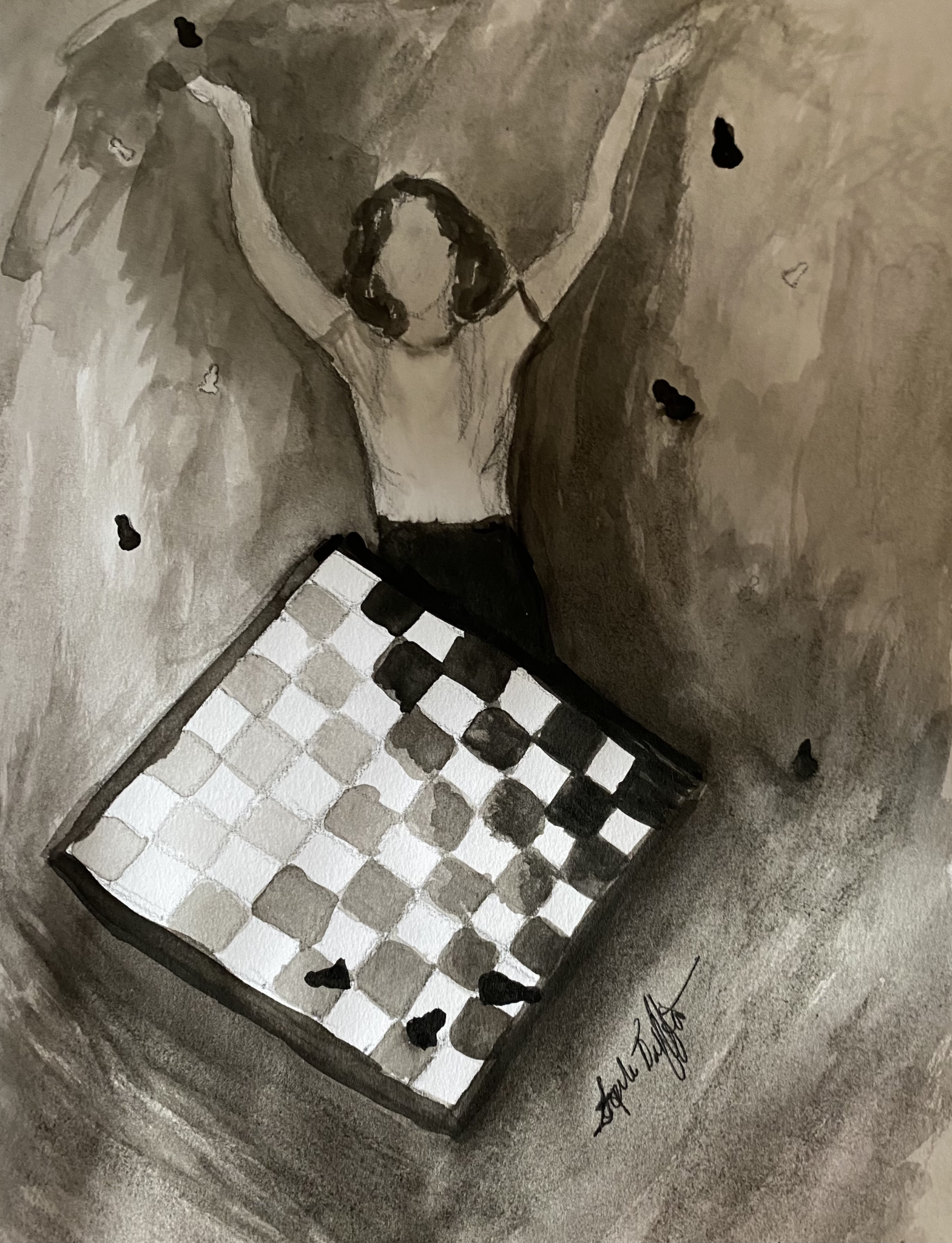
Sophia Deschiffart
My plethora of Pinterest boards may give some indication that I’m a fan of aesthetics. Rainy days, gothic architecture, dark academia — all of which have absolutely no connection as to why I chose Yale — are circumstances which in their visual aspects foster specific moods — moods which I enjoy immersing myself in.
Chess has a brilliant aesthetic about it. The carefully carved pieces atop a dual-colored checkered board, the intense focus of the players as they meticulously reason out their moves, the brimming quiet full of logic and painstakingly thought out plans to chip away at an opponent brick by brick; get yourself a cup of tea and you’re set. That’s all I thought the game was before I learned to play, anyway.
A few months ago, in a moment of overthinking while on the phone with my older sister, I mused that I was playing chess while the person whose text I was struggling to respond to was probably just playing checkers. I then joked that I didn’t even know how to play chess. I flashed to my surprise when she offered to teach me.
We began that night. My sister and I each downloaded a chess app, and the game commenced. She let me win at first, because our goal at that point was just to teach me how the pieces moved. I picked it up quickly, and one game turned into two. Eventually we called it a night, and in the sleep that followed, my dreams swam with kings and queens and rooks and bishops.
The next day, a friend and I had our bi-weekly Zoom call. As we updated one another about the happenings in our lives, I mentioned that I was learning to play chess. When I told him which app I was using, he lit up in recognition and said that he uses the same one. The logical next move was for us to start a game — he won.
Soon, I was playing every day, mostly against the computer. Game after game, I continued to improve. The way the pieces drifted across the board became second nature, and even throughout the mundane moments of my days, I started to see chess scenarios work themselves out in my mind.
Now this wasn’t “The Queen’s Gambit”, and I was not, by any stretch of imagination, Beth Harmon. I was still losing just as many games as I won, but chess had moved to a place in my life where I began to claim it as a hobby.
I eventually gained the ability to see plots appear before me as I went through a game. When I lifted a piece, I was thinking two or three moves into the future, anticipating how my opponent would respond, planning for something unexpected. I recognized that I could have been going further than that — I could have been figuring out the whole game before even touching a pawn. I didn’t though.
Of course, even the best chess players, no matter their strategy and scheme, can lose. But they would most certainly win against me because I don’t look as many moves into the future as they do. I can see my end goal — checkmate — and I can see the first few steps I’ll take to get there, but that’s as far as I go. A few moves at a time, largely moment to moment. What can I say, I like a little bit of the unexpected.
Chess is a game of strategy, and I do have strategy: Being chaotic, shortsighted and hoping for the best. Just kidding! (Mostly.)
Maybe my “strategy,” or arguable lack thereof, is why I’ve lost many of the games I’ve played. Maybe that’s why after that first game with my friend, he said I was doing so well that he thought I was getting help. Maybe that’s why I think chess is so much fun. Maybe that’s why it’s such a truly beautiful game.
People like to compare chess to all things grandiose and not entirely necessary — life, love, war, dance. But above all else, I think simply the aesthetic of chess comes closest to encapsulating its essence; chess, after all, is nothing more than a game. Nothing more than a still shot moment of players locked in concentration, cups of tea gone cold and 32 carefully carved pieces atop a dual-colored checkered board. It’s a painting. A sculpture. A photograph. Art.
And, in the words of the aesthete Oscar Wilde himself: “All art is quite useless.”
Annie Sidransky | annie.sidransky@yale.edu







